commentary Commentary
Commentary: Why China signed an unequal trade deal with the US
The US-China Phase 1 trade deal slapped huge commitments on China yet did not remove many imposed tariffs and will be challenging to implement amid a coronavirus outbreak, says Bert Hofman.
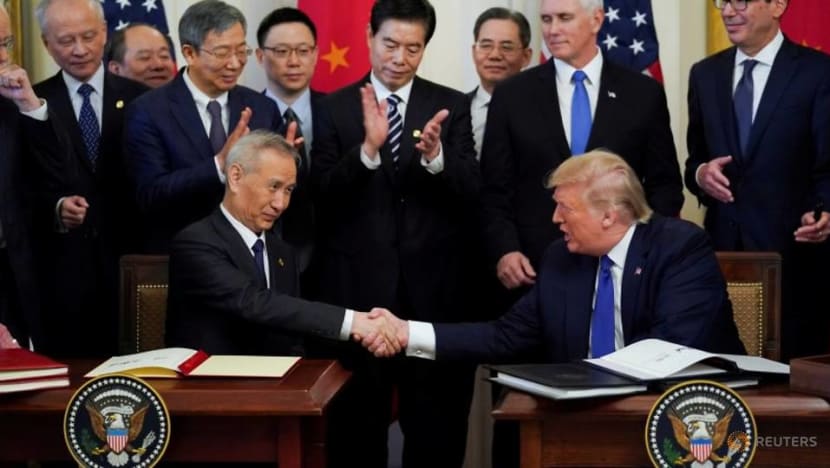
FILE PHOTO: Chinese Vice Premier Liu He and U.S. President Donald Trump shake hands after signing "phase one" of the US-China trade agreement, Jan 15, 2020. REUTERS/Kevin Lamarque/File Photo
SINGAPORE: “America is winning like never before”, US President Donald Trump said at the 2020 Annual Meeting of the World Economic Forum in Davos. As exhibit one, he offered the trade agreement with China signed on Jan 15, 2020.
In his State of the Union speech on Feb 5, he positioned the trade deal as a win over China’s massive theft of American jobs.
READ: Commentary: Trump’s State of the Union tells us what his re-election bid will be about
READ: What's in the new US-China 'phase one' trade deal?
As trade agreements go, this one is remarkably one-sided with China making the bulk of commitments.
The agreement contains a total of 105 commitments by China (“China shall”), compared to 88 joint commitments (“Parties shall”) and only five commitments by the United States (“the United States shall”).
In most clauses, the United States simply “affirms” that its existing policies already meet the requirements in the agreement.
CHINA HAS CALCULATED SIGNING BENEFITS IT
So why did China sign on the dotted line? First, the agreement commits China to steps that solidify already ongoing reforms in intellectual property (IP) protection, technology transfer and the financial sector.
The reforms committed are already in place, but tying these to an agreement with the US can reinforce their urgency domestically.
These changes are to China’s long-term benefit. They will further improve China’s business environment, make it a more attractive place to invest in new technologies, and over time, improve the efficiency of investments made by a more diverse financial sector.
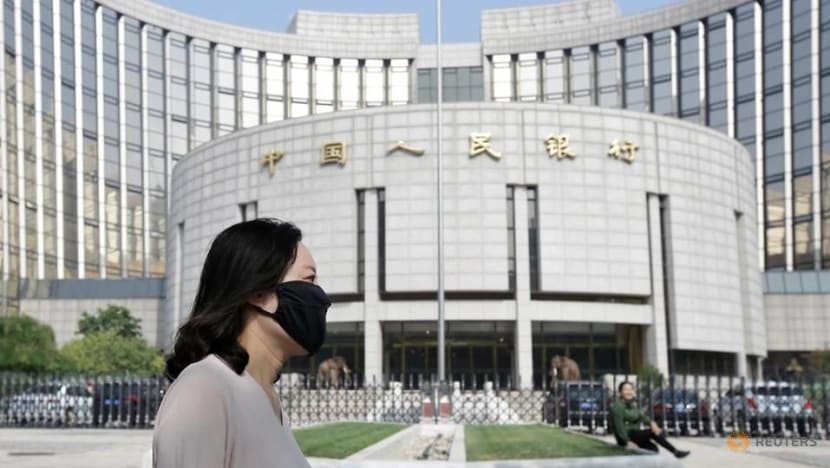
Second, the agreement may lead to some calm and lower policy uncertainty, aiding China’s growth at a time when the domestic reform agenda may slow it down.
Indeed the International Monetary Fund (IMF) recently upped its growth projection for China by 0.2 percentage point for 2020 prior to the novel coronavirus outbreak, largely on the basis of the reduction in uncertainty due to the trade agreement.
Calm is not a given. The agreement itself provides for further negotiations and President Trump seems keen to start negotiating Phase 2 right away. The Trump administration is also turning its attention to others, including the EU and the UK, so calm on the broader trade front may remain elusive.
READ: Commentary: Despite Phase 1 trade deal, some US-China decoupling may get underway
A third explanation for China’s willingness to sign on this agreement is that it needs this trade deal to buy time. In the past two years of trade tussle, China has come to realise that the ultimate aim of the United States is decoupling, containment and slowing China down.
The trade dispute has revealed China’s dependence on the United States for key foundational technology and its need for more time to prepare for an unavoidable confrontation down the road.
AN UNBALANCED TRADE AGREEMENT
Irrespective of which explanation holds true, the unbalanced nature of the agreement is striking. The commitments China has made in terms of structural reforms are not matched by US concessions.
First, the agreement leaves the tariffs imposed thus far largely in place: Only the 15 per cent tariffs on China’s US$150 billion export imposed in September 2019 was reduced to 7.5 per cent, a rather meagre step back towards normalcy.
In addition, the tariffs on another US$180 billion of imports from China, announced for mid-December 2019, were postponed.
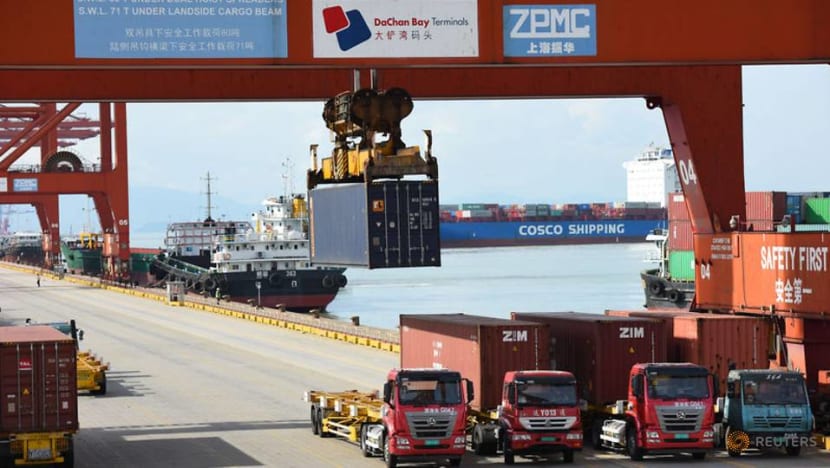
Second, the agreement leaves other measures the US has recently imposed on China untouched.
These include: The “entities list” on which Huawei and some 28 other companies have been placed in the course of the trade dispute, the sharper Committee on Foreign Investment in the United States rules aimed at further reducing China’s foreign direct investment in the US, and the export restrictions for national security reasons that Chinese companies increasingly face.
Third, China unilaterally accepted some of the US’s Food Security Standards in the agreement. Mutual recognition of standards is common in trade agreements and customs unions such as the EU, but one-sided recognition is rare.
In this case, it was likely included to avoid delays in the agreed increase of agricultural purchases by China, which previously often met with roadblocks imposed by China’s food safety bureaucracy.
READ: Commentary: It's only a pause for breath in US-China trade tensions
READ: Commentary: The grand Chinese tech train is slowing down
A modest “win” for China is the removal of China from the US Treasury List of Currency Manipulators. The move to put China on that list last August surprised many, as China had long given up on its policy of intervention to keep the currency weak.
Instead, since the onset of the trade war with the US, China had been intervening to keep the currency strong. Whatever may have been the case, the designation as currency manipulator was largely symbolic, so the abolition of this designation also has little impact.
THE CONSEQUENCES OF MANAGED TRADE
China agreed to increase purchases from the US by US$200 billion in the coming two years. Oddly, this is not a number to be added to China’s overall imports of about US$2.2 trillion in 2017, the “baseline year”. Nor is the US$200 billion in addition to China’s total 2017 imports from the US of US$180 billion.
The increased imports are for a specific subset of goods and services from the US, amounting to some US$130 billion in 2017.
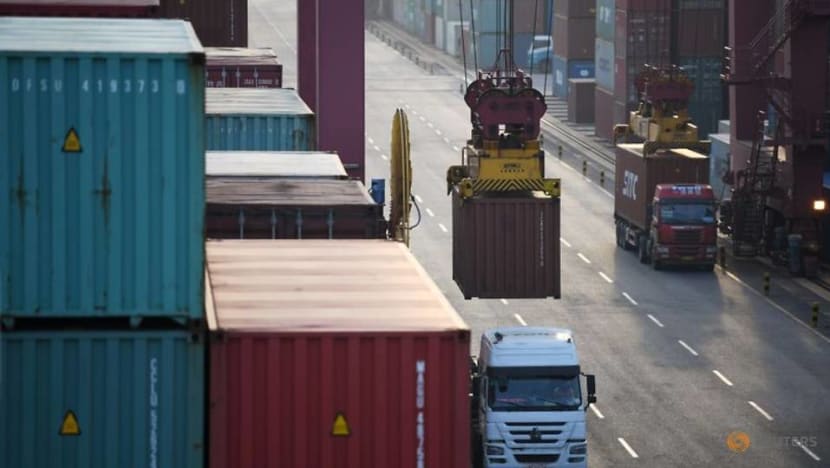
This narrow definition of what import counts – mainly manufactured goods, energy, agriculture and services - makes it harder for China to meet the targets, and probably reflects lobbying by special US interest groups.
China’s import commitment will affect the exports of other countries to China. Specifically, Brazil, Russia, Canada and Australia are likely to lose out on their commodities exports. In manufacturing, Europe, Japan and South Korea stand to lose.
EU Trade Commissioner Phil Rogan expressed his concern on the agreement and the consequences for the EU’s exports to China.
Europe and others will also continue to face additional pressures from China’s exports, which were redirected to their markets because of the tariffs on China’s exports to the US.
READ: Commentary: The problem with a Phase One US-China trade deal
The US-China Phase 1 trade agreement clearly does not meet WTO conditions. While it stipulates that “purchases will be made at market prices based on commercial considerations”, Article 6.2 of the US-China Phase 1 trade agreement is very clear that China’s expansion of imports will involve only US exports.
This transgresses the WTO’s most basic rule of “Most Favoured Nation”, or MFN. MFN means that members should treat all other members at the most favourable terms granted to any.
Exceptions can be made for a free trade agreement between countries, if it is broad-based, i.e. comprising most of the trade in goods and services.
Voluntary Import Expansion (VIEs), as the purchasing agreement is called in the trade literature, can be WTO-incompatible, but only if the commitment is general and not limited to imports from a specific country.
WHAT NEXT?
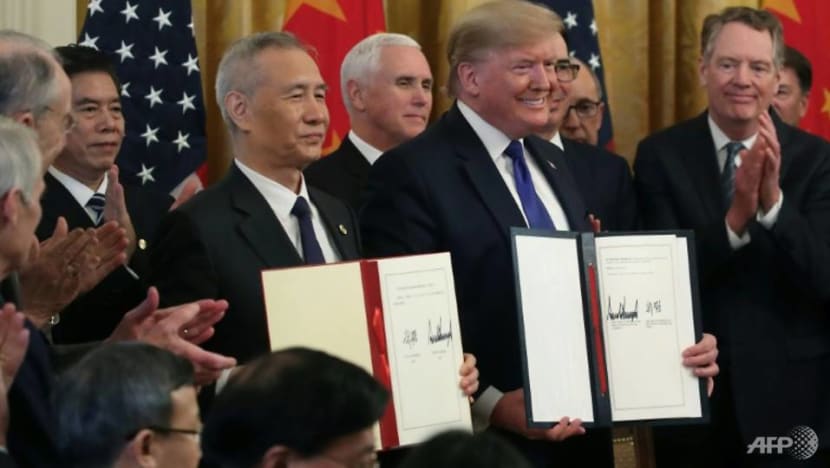
The overall outcome arising from the agreement may be that China will create a better environment for technology and IP dependent industries, and boost future investments there.
The US can sell more goods to China in return, particularly agriculture produce and energy. The US’ bilateral trade deficit with China is likely to go down given China’s commitment to buy more and the continued effects of tariffs imposed on China’s exports.
Overall, though, the US trade deficit will not go down because of this agreement. Trade deficits depend on macroeconomic policies, not trade policies.
All signs are that the US, which has been running a trade deficit since 1974, will continue its loose fiscal and monetary policy driving these deficits.
READ: Commentary: The next recession cannot be fixed by higher government spending
Furthermore, the tariff war does not seem to have achieved what the US has set off to attain: Revamping US based manufacturing.
A working paper by the US Federal Reserve Board finds that US manufacturing industries more exposed to tariff increases experience relative reductions in employment as the positive effect of import protection is offset by larger negative effects from rising input costs and retaliatory tariffs.
The next phase of negotiations will have to address industrial policy, state-owned enterprises and subsidies — highly contentious issues that did not make it to Phase 1.
A preview of what the US expects China to agree on can be found in the Jan 14 Joint Statement of the Trilateral Meeting of the Trade Ministers of Japan, The United States and the European Union. This bluntly states the WTO policies on subsidies fall short, that the WTO appellate body has been too lenient on the issue of subsidies and state entities in the past, and that both need fixing.
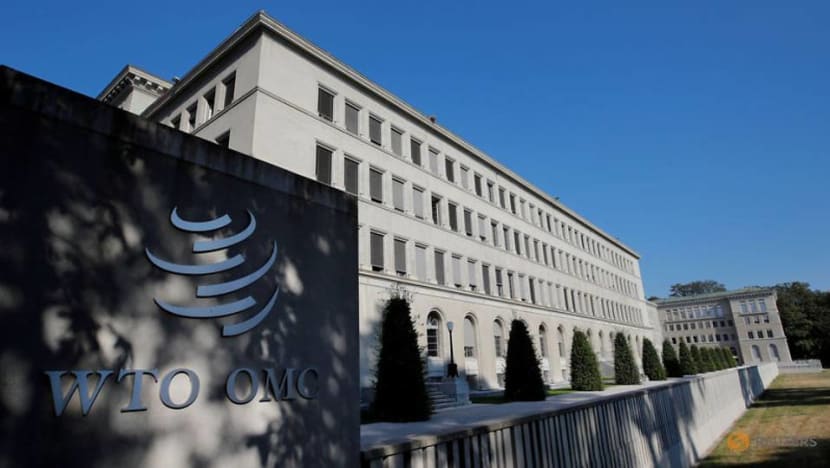
Though China is not mentioned, it is clearly the main target of such fixes and we can expect more fireworks in the Phase 2 negotiations.
The new COVID-19 outbreak may delay implementation of China’s side of the deal. The country has come to a virtual halt after the virus spread.
The agreement allows for consultations after delay due to “natural disaster or other foreseeable event”. But the US Secretary of Commerce Wilbur Ross and Director of the US National Economic Council Larry Kudlow gave conflicting messages over what the US reaction would be to any delay caused by the virus.
Hopefully, it will not derail the agreement at such an early stage.
Bert Hofman is Director of the East Asian Institute National University Singapore.















